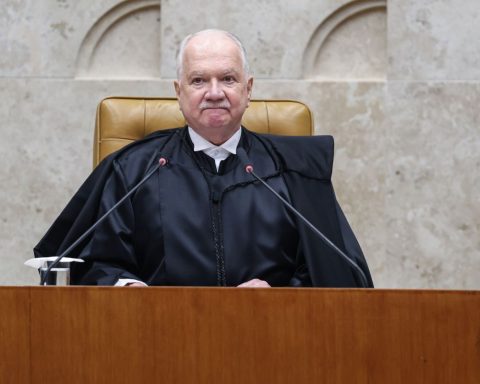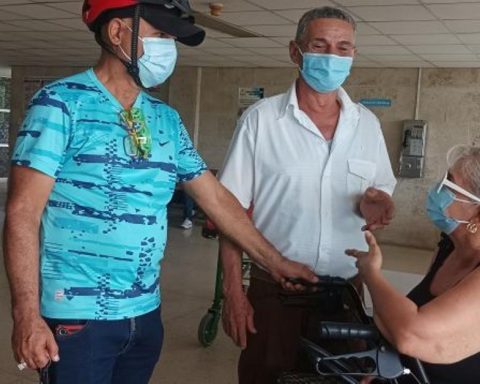Lower the temperature of the planet by injecting millions of tons of aerosol particles into the stratosphere to form a kind of “half shadow” It is one of the most controversial technologies to face climate change that is being evaluated in the world and in our country it investigates the climatologist Inés Camilloniwho spoke with Télam in the framework of the TEDxRiodelaPlata talks which took place this afternoon.
“Hopefully it won’t be necessary to use it,” he added about that kind of spatial filter, and stated that in Argentina the issue must be “awakened” in order to have a greater participation in international discussions.
“It is as if one enveloped the planet in a half shade that would attenuate the energy we receive from the Sun between 1 and 2%. We are not going to make a very noticeable shadow, but less energy would reach the surface and thus lower the temperature“, explained Camilloni, doctor in Atmospheric Sciences and professor at the University of Buenos Aires (UBA).
In dialogue with Télam, the Conicet researcher reviewed the possible risks and benefits of modifying solar radiation, the ethical dilemmas of this technology and pointed out that, although it is still in the research phase, “in the next ten or fifteen years everything would be ready to be implemented”.
The manipulation of the Earth’s climate on a large scale is called geoengineering and appears as a tool that, if necessary, would allow “quickly lowering the Earth’s temperature,” said Camilloni, who spoke about this technique in the TEDxRíodelaPlata talks which had a massive edition at the Movistar Arena stadium.
In a catastrophic context where the world is heading towards a global warming increase of 2.8 degrees by the end of the century, the geoengineering begins to be studied as a technology to alleviate heat waves that cause more and more deaths and mitigate extreme droughts and floods, among other climatic disasters.
The strategy seeks to artificially replicate the effect of volcanoes: “When there is an eruption, ashes are released that reach the stratosphere, about 20 kilometers high. From there, they reflect more energy from the Sun into space and lower the temperature,” Camilloni said.
The idea is imitate ashes entering the stratosphere small aerosol particles to reflect more solar radiation back into space Y counteract temperature rise caused by the greenhouse gases.
For chemical particles to reach that layer of the atmosphere, it will take send planes several times a day specially designed to achieve 20 kilometers high.
Although it seems science fiction, “it is technologically feasible and effective to lower the temperature”indicated the climatologist and added that for the world economy it would not be costly keep this “half shade” because dwould send between 10,000 and 20,000 million dollars per year.

A few days after United Nations Climate Change Conference (COP 27) which will start on Sunday, Camilloni maintained that, although these disruptive technologies are increasingly being discussed at international meetings, “they are not the solution to climate change.”
“It would be a huge failure for humanity to have to resort to this because knowing what the causes of a problem are, we have not acted, We have not made a transition to renewable energies, nor have we managed to decarbonize the economies”affirmed the researcher who will participate in COP 27 in a panel on climate engineering.
How would geoengineering impact South America?
From the Research Center of the Sea and the Atmosphere (CIMA), dependent on the Conicet and the UBA, Camilloni investigates together with his team what the impacts would be in South America and in the Plata Basin if solar geoengineering were implemented.
Through computational models simulated incorporating 50 teragrams (50 million tons) of sulfur particles on the stratosphere for offset record carbon dioxide emissions of the present
They chose sulfur because it is the element that is released in volcanic eruptions and they already know how the atmosphere responds thanks to the historical eruption of the Pinatubo volcano in the Philippines.
It was in 1991 when this volcano injected 20 million tons of sulfur dioxide into the stratosphere and cooled the planet’s temperature by half a degree in the following months.

Yet nowhere in the world did they go from simulation to experiment and, in case of doing so, another substance such as calcium carbonate should be used, since the sulfur in the stratosphere would damage the ozone layer.
Among the results of the study published this year in the prestigious scientific journal Frontiers, Camilloni highlighted that “Indeed, the temperature would drop between one and two degrees Celsius between 2021 and 2050the extremes of precipitation would decrease, but on average the rainfall would increase in the upper part of the Plata Basin and decrease downwards”.
What geoengineering would cause changes in the water cycle, the Paraná River in Posadas and Corrientes would have more flow, as would the Uruguay River in Salto Grande, so it would be necessary to evaluate how it would affect the hydroelectric dams in the region.
“One could think that more available water could be beneficial, but the maximum flows would tend to be more maximum and there the question is whether the dams are sized for higher flows”, warned the researcher.
consulted on whether it is ethical to deliberately modify the climatethe scientist assured: “It’s not ethical, but we’re already doing it. Climate change is a consequence of climate manipulation.”
“The ethics of geoengineering has to do with contrasting the risks that climate change is imposing on us versus the risks of thinking of this strategy as a temporary solution while we act on the root causes,” said Camilloni, who was recently incorporated to the World Commission on the Ethics of Scientific Knowledge and Technology of UNESCO.
And I add: “I think that the ethical discussion is now about seeing how we can avoid more of the human suffering that living with climate change implies.”
For Camilloni it is not about being for or against geoengineeringbut of “Continue research to understand what the risks are and if we can reduce them.”
He also pointed out that in developing countries like ours, it is necessary to “wake up the issue” because this technique would produce unequal effects in the different regions and would generate a “new climate” with winners and losers.
In this sense, the researcher stressed that before implementing these new technologies, a global agreement is necessary and stressed that “if Argentina has to decide at some point, let it be a decision informed by local science.”
And he concluded: “Hopefully this does not need to be used and the real causes of climate change can be addressed.”


















